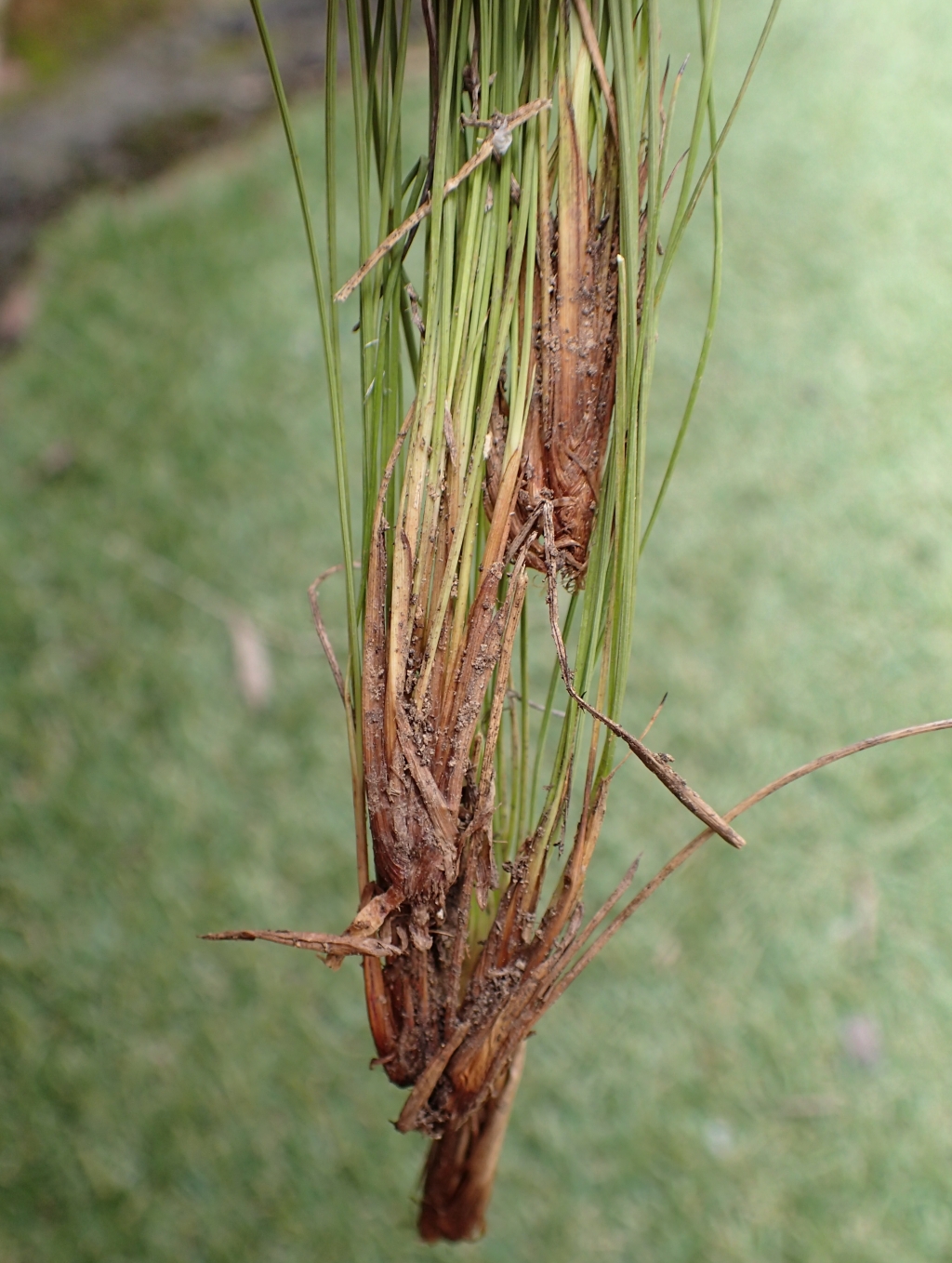Lepidosperma tortuosum
F.Muell. Tortuous Rapier-sedgeSmall tufted perennial with very short rhizome. Culms rigid, often somewhat twisted, biconvex centrally with flat margins, striate, scabrous to smooth, 10–35 cm high, 0.5–2.0 mm wide; margins scabrous. Leaf-blades slightly biconvex with central groove on each face, shorter than culms, 0.5–2.0 mm wide; sheaths yellow-brown to reddish, not viscid, ± shining. Inflorescence ± ovate, of several small clusters of spikelets with rachis usually strongly flexuose (rarely scarcely so), 0.8–4 cm long, 0.5–1 cm diam.; involucral bract shorter than to longer than inflorescence. Spikelets few, 5–8 mm long; glumes 5–7, red-brown with straw-coloured patches to grey-brown, the 3 or 4 lowest empty, much shorter than fertile glumes, obtuse, mucronate, glabrous; fertile glumes 4–5 mm long, acute, slightly scabrous; hypogynous scales 6, whitish, from one-third to two-thirds length of nut. Nut ellipsoid to ovoid, grey-green, ± smooth, shining, 2.0–2.7 mm long, c. 1.5 mm diam. Flowers spring–summer.
GipP, CVU, EGL, EGU, HSF, HNF, MonT, VAlp. Also ?SA, NSW, Tas. Occasional in heathlands and woodlands of lowlands and foothills, usually on soils which have a tendency to become waterlogged.
Characteristically, this species has a small inflorescence with the branches strongly contorted.
Wilson, K.L. (1994). Cyperaceae. In: Walsh, N.G.; Entwisle, T.J., Flora of Victoria Vol. 2, Ferns and Allied Plants, Conifers and Monocotyledons, pp. 238–356. Inkata Press, Melbourne.
 Spinning
Spinning
